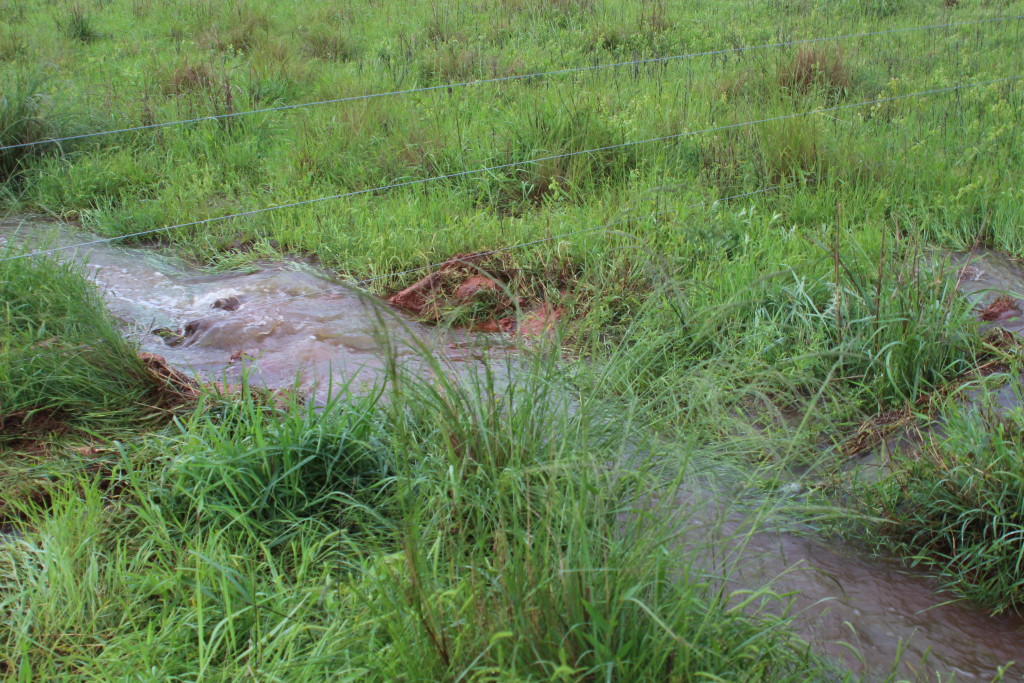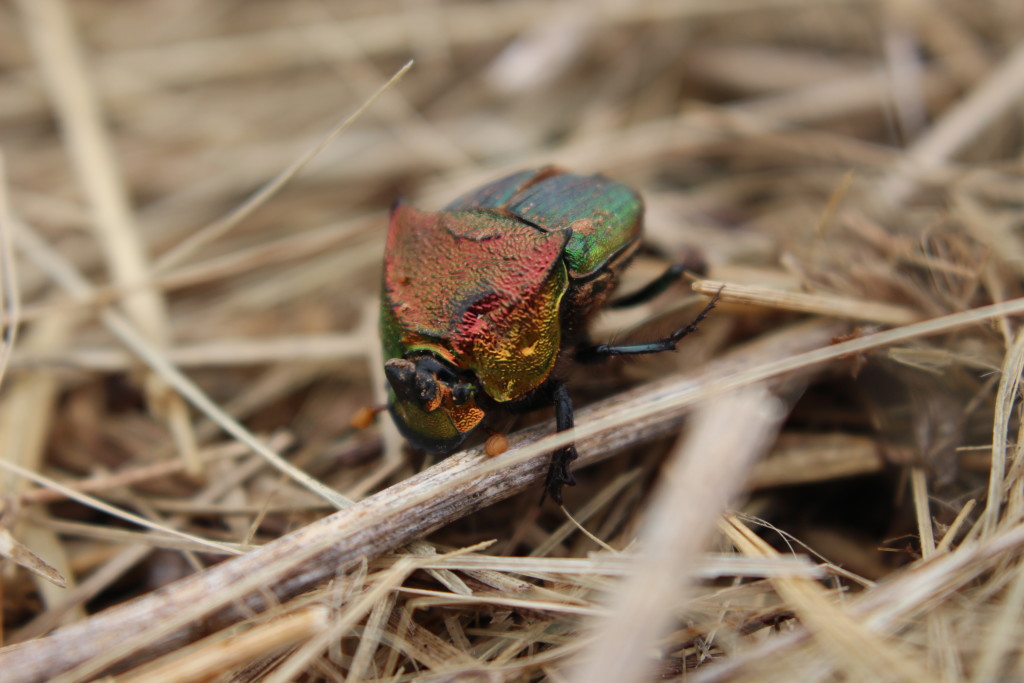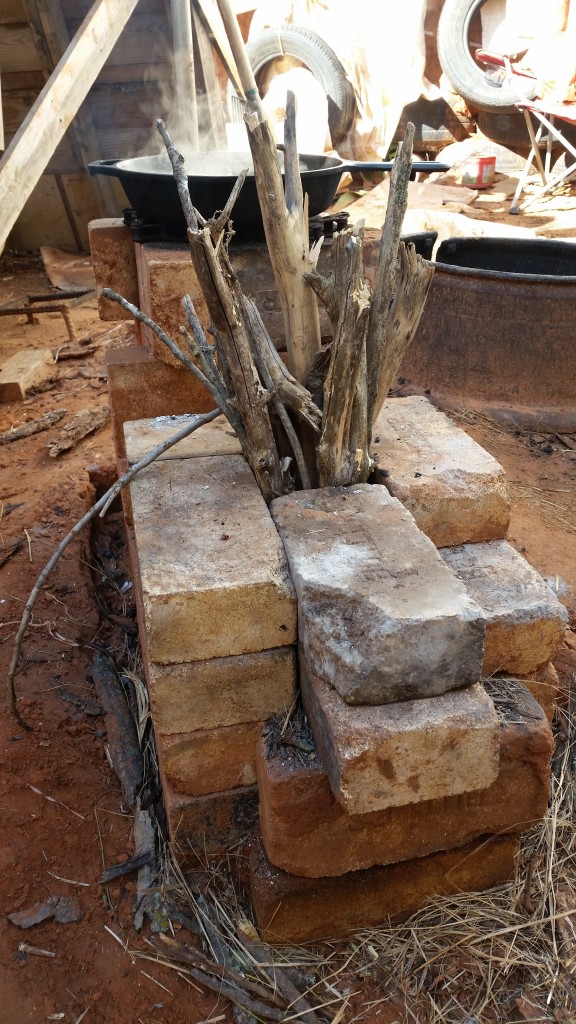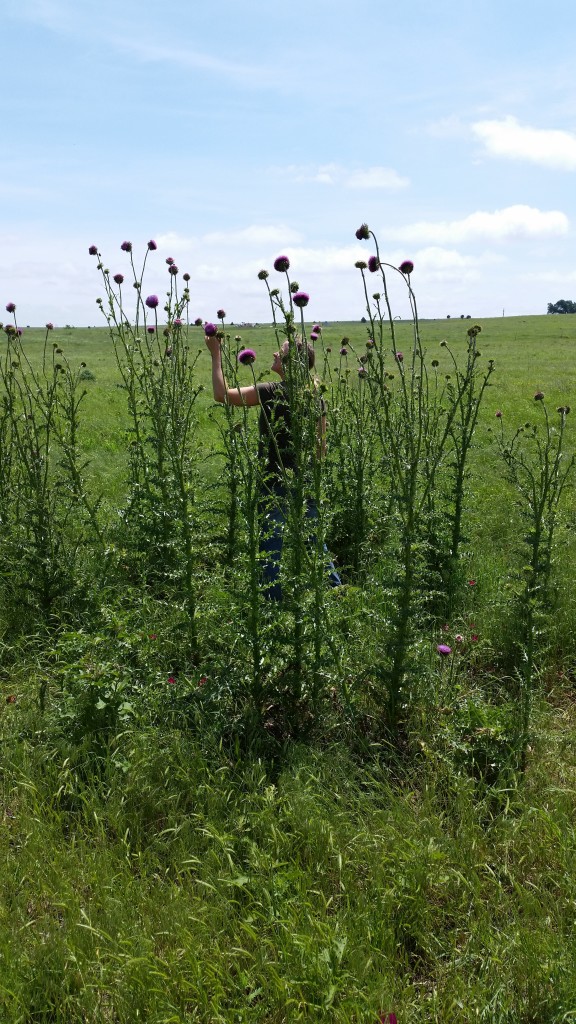The week of perfect days. Those were the last couple of days of April and the first couple of days of May. The wind didn’t blow any harder than 10 mph, the sun warmed our earth and our bodies, but not too much, and perfect fluffy clouds played bumper cars above our heads. We worked plenty, but often found ourselves just sitting or standing soaking in the seamless beauty of nature. And then, it rained. And it rained some more. And the wind blew and blew and thunder blasted through the skies and lightning scared us inside the trailer. That was the week of rainy days. Then, there was some sun. And then it rained nearly the entire month of May. Oklahoma Climatological Survey tells me (though I already presumed) that this year has had record-breaking rain. The most rainfall in the month of May for the southwest region of Oklahoma was 10.75 inches in 1987. This year it reached 15.16 inches on the 30th of May! This is the wettest Oklahoma May since record keeping began in this region in 1921. While the boys and I were snuggled in the trailer reading books about dry places, Aaron was running around outside, soaking wet, moving dirt and placing rocks just so, to divert the water into our swale systems.




You can see how much water is being diverted instead of flowing under the fence and down the pasture. The land uphill from our house is like a huge collection plate and it runs along a man-made terrace, where it fills up and then spills over into a rapid ephemeral stream that runs down to the creek. The pictures above occur near the end of that terrace. Just before it gets to the creek, it makes a huge headcut (an erosion cliff) that has probably 25 feet of drop. In large rain events, it creates a waterfall:
<iframe width=”560″ height=”315″ src=”https://www.youtube.com/embed/24R7MOC1gVM” frameborder=”0″ allowfullscreen></iframe>
Aaron is researching what steps to take to mitigate the cutting-back of that spot. For now, he’s diverted some of that water above our house so that it will recharge the water table in and around our property. Our large swale was totally full, as well as the keyhole gardens and other smaller swales. Our front “patio,” as we may well begin calling it, was also full. That’s the area we’ve been landscaping.

The natural slope of the land goes down from right to left in the above photo. It began as a small measure taken t0 prevent water from collecting around the foundation of the house. Basically, we dug and leveled a skirt around the perimeter of each room. When we got to the intersection of 2 rooms where one room is 18 inches higher than the level adjacent to it, we decided to make broad, flat areas that complement each level. These “outdoor rooms,” as we may end up calling them, are not exactly level, but slant slightly back into the existing slope, so that they keep the water in the landscaping, instead of allowing it to run off down the pasture. It needs more work, of course, but this is a great start.
It was very difficult for me to see the big picture of how these outdoor rooms would level out. We had to cut out the natural downward sloping landscape and add in to places to make these semi-level terraces. Any top soil has been recycled into this big picture landscaping project, while any subsoil has gone into bags and cob. It was kind of an epiphany to me when my husband sidetracked our efforts toward progress on our house to make big holes in the yard, when I realized that not only were we leveling an area for the wheelbarrow to move through, but also creating an outdoor patio area, while, low and behold, uncovering a huge trove of subsoil to fill bags with right next to the location on the house that is was needed! Stacking functions. This man is an expert in that category.
There are three circular rooms and six respective outdoor rooms, three on the south and three on the north. The rooms south of the house will function as places to congregate in the winter; the northern wind is blocked by the house, and the sun will warm up the southern walls and patio. This will be a great place for heat and dry-loving plants like rosemary, lavender, and cactus. The rooms north of the house will be cooler and shaded in the summer months and may someday contain an outdoor kitchen, shade trees, and small pools where seasonal fish may live. The opportunities for creatively managing our homestead seem endless! It is so exciting to be able to alter our landscape in a way that works for us and our environment.
The boys’ room, or east room, has gotten taller in between rains. We removed the forms from that wall and got them cobbed. We still need to apply paint or more cob to protect the bags in the windows. These small windows will either be small windows, or we’ll cover the outside with cob, and they’ll be cubbies inside. We were also contemplating using cob and different colored glass bottles to create a stained-glass window effect, but only having that cob 6 inches deep. This would leave a small interior sill that could still function as cubby space.


This year it seems that with Aaron’s intensive management of the cattle, the pasture grasses are taller for longer and this allows more habitat for birds, small rodents, and reptiles. Speaking of reptiles… we saw a hog-nose snake basking in the sun near our front patio. Hopefully its diet is rich in mice. It was too fast for a snapshot. Maybe another day. I think it was a baby. Also, just after a storm, I saw a salamander in our temporary kitchen. It was black with bright yellow spots and was crawling out of a puddle. I said hello and then goodbye, without bothering it for a photo shoot. I did get a picture of a bat that had flown into one of our tarp-securing tires. It may have fallen in during one of the previous storms and couldn’t quite make it out. We moved it to the big elm tree where it climbed up the bark in a slow yet appreciative manner.

Guinea News: During our routine cleaning-out of the chicken coop, we moved the guinea eggs, all 66 of them, from their nest. They were cold. Cold like refrigerated eggs. Unfortunately, the rumors were true about the neglectful habits of guinea mothers. It is my assumption that they simply didn’t sit on the nest enough to incubate the eggs. We moved them into the nesting boxes, after we marked each one. Hopefully, they will take the hint that the nesting box is where to lay the eggs. Periodically, we will check to see if there are any new, unmarked eggs and save them from their chilly plight by moving them into an incubator. But it is my guess that the guinea ladies will lay their clutches in the tall grass somewhere, well hidden from us, and treat them the same as the first batch.

That bad news was quickly washed away by more rain and a trip to the Southwest Oklahoma Beekeeper’s Association meeting, where I was gifted a nucleus box of honeybees! I had been readying the top bar hive in April, adding strips of beeswax to the top bars, and thinking about the best location for the hive. I decided on a spot close to the creek, an edge-effect area, if you know your ecology terms, with plenty of afternoon shade, a little protection from the wind, and a comfortable distance from the house. We brought the bees home and, using a stand and a pvc tube, Aaron rigged up a sturdy connection so that the brood in the nucleus could hatch and then transfer themselves into the top bar hive (TBH). This project filled a sunny afternoon and left us inexperienced beekeepers with our first taste of the nature of bees. We returned home that evening with 12 stings between the three of us. We now await some beekeeping veil-and-jacket sets and a smoker. Some things you just have to learn the hard way. As of yet, the bees have not been building comb in the top bar hive, but it may take some time for the brood to hatch before they decide to do so. In the meantime, I look forward to my daily trips down to the hive to feed them sugar water.



Another insect of interest this month is the dung beetle. Aaron has been all excited about dung beetles, the highly esteemed bug of many a historical culture. The Egyptians revered the dung beetle as a “sacred scarab,” who renewed the sun each day by rolling it above the horizon. They created many hieroglyphics showing their respect for the beetle. In modern times, farmers and ranchers also respect the beetles because they move cow patties up to 6 feet beneath the earth. In fact, there are many different types of dung beetles that move dung to different areas of the soil profile, allowing decomposition and fertilization to happen from within the soil and not just on top.

And now, for brick-tech news. So, this temporary outdoor camping lifestyle we’re living is pretty rough at times. Like boxcar kids, we live in an off-grid semi-trailer with no electricity or running water. Imagine living outdoors all the time. Of all the labor intensive chores necessary to live this way, the most stressful of them all is cooking. Don’t get me wrong, I like cooking. I like experimenting with new recipes and serving healthy meals to my family. But when the wood is wet, my back hurts from leaning over to blow into the fire, and my eyes are sore and dry from the incessant smoke, I have to consciously remind myself to be grateful for the Bic lighter.
I can tell you now that I have never been more grateful for any invention so low-tech as the rocket stove. We got some fire bricks for a great price at the local co-op and Aaron fashioned us what I thought was just a cute little fireplace. He has built a couple of rocket-stove prototypes in the past, but this one… this one takes the cake. It uses roughly 20% of the wood we were using in the firepit. The wood is smaller too, so it’s easier to collect, store, and break down. The fire is lit in the burning chamber, and because heat rises and causes a “stack effect,” the chimney pulls the flame and heat up through it, efficiently combusting the wood. The best part: There is virtually no smoke! A little upon the initial lighting of the fire and a little at shut down time (closing up the brick chimney) but almost none during cooking! While the chimney is pulling the flame and heat up, it makes a sucking-burning sound that can only be described as “rockety.” Plus, the remnants of the coals undergo pyrolysis and create biochar as an added bonus. (After composting biochar, it can be added to the garden as a super soil builder).


They say it’s the little things that make life really grand, but sometimes the little things are huge advancements disguised as cute little fireplaces. The rocket stove is such an improvement to our lives. It frees up so much time, is better for all of our lungs, requires less manipulation of wood on fire, makes biochar as a byproduct, sounds cool, and cooks food! Why we didn’t come up with this sooner is beyond me.
Lastly, here’s a photo of me standing in a patch of giant thistles. Bull thistles, I believe. There were all sorts of lepidoptera feeding on their blooms. I would imagine the bees will enjoy them as well.










1 thought on “Reflections on May, 2015”
So glad to recieve this and know you are doing well after the rains! I have been thinking of you all much recently, almost everytime I work out in the garden. The rocket stove looks like an adapt on a sweedish log fire I have seen used to boil water quickly with just a log split into quadrants.